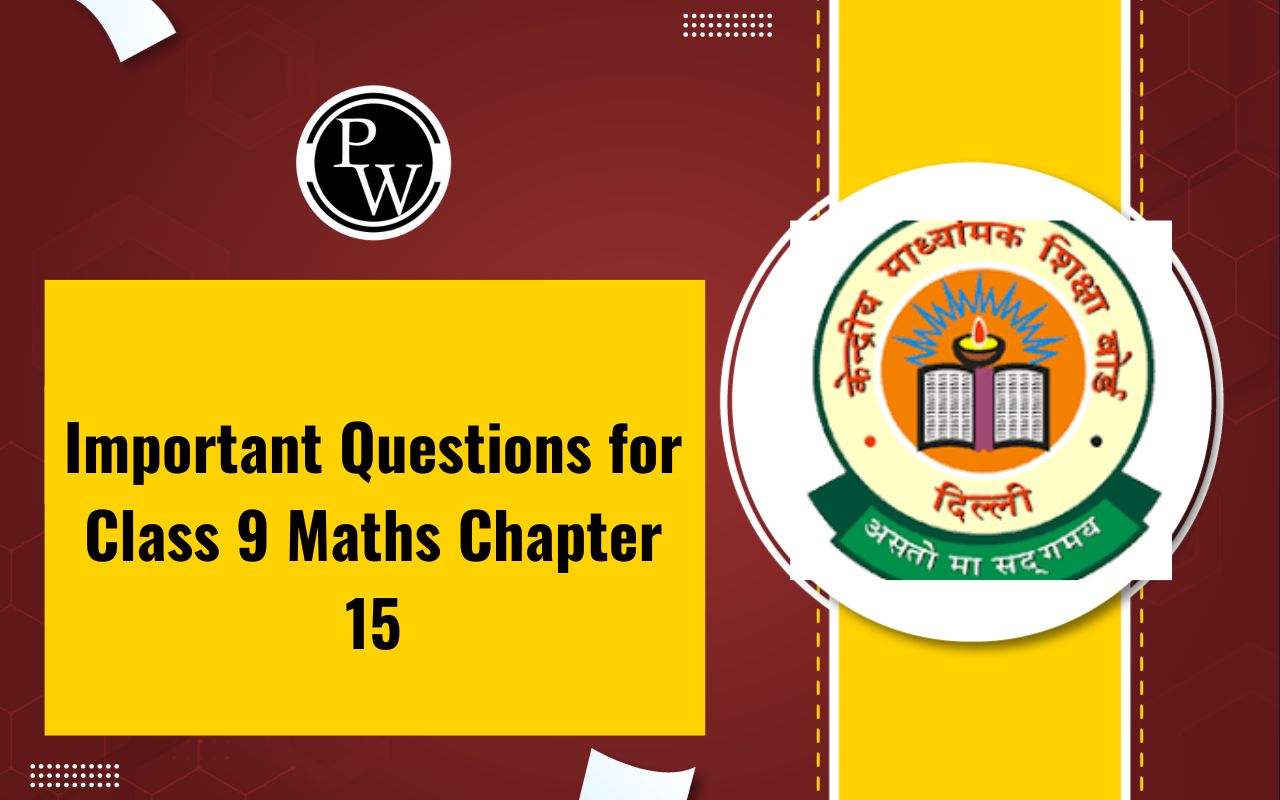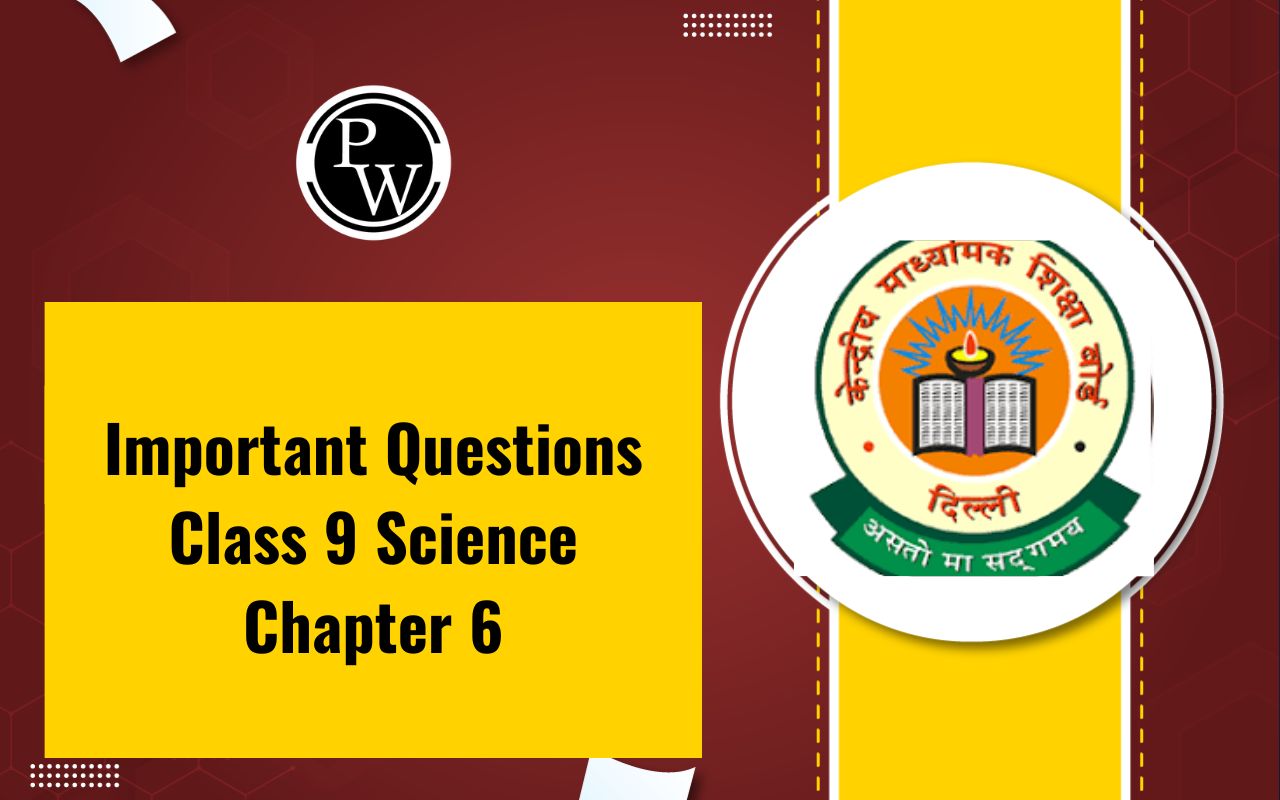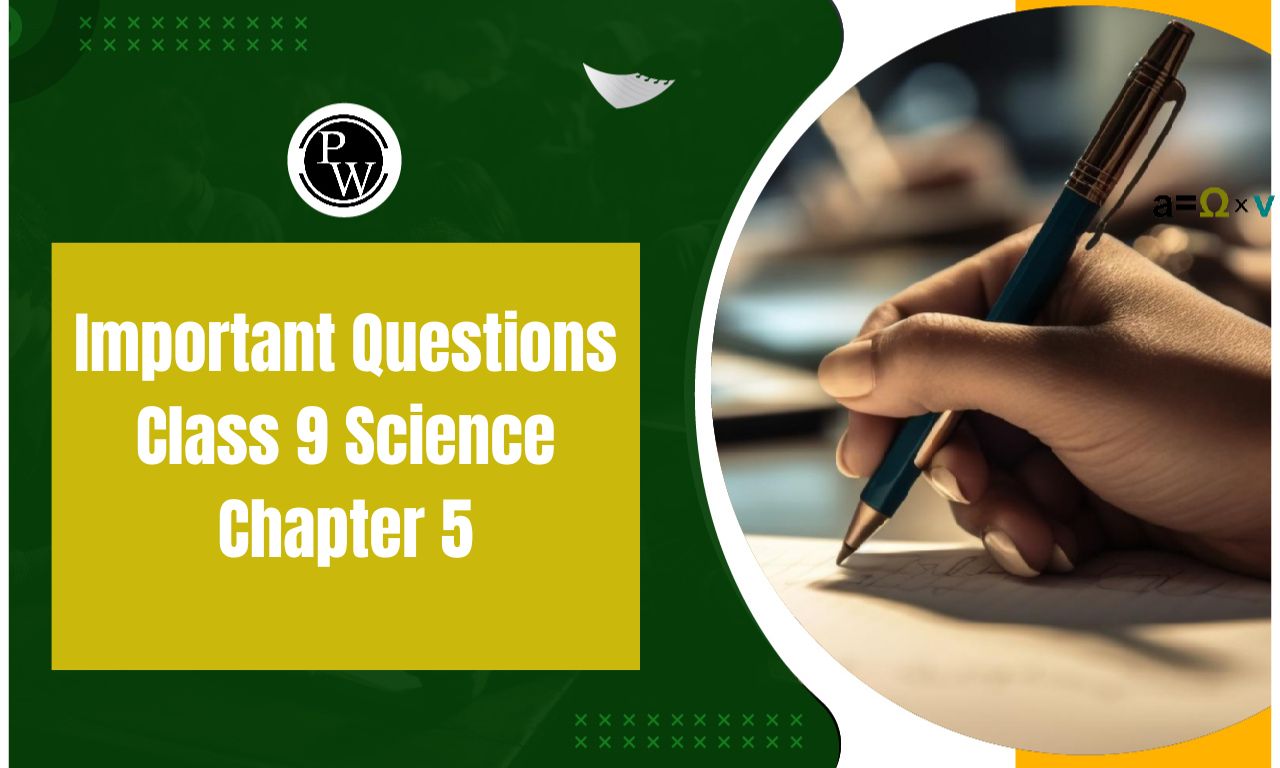

Important Questions for Class 9 Maths Chapter 15: Important Questions for Class 9 Maths Chapter 15 help students understand the topic of Probability better. This chapter introduces basic ideas like experiments, outcomes and events which are important not just in math but also in everyday life.
By practicing these questions students can learn how to solve different types of probability problems, from easy to challenging ones. These questions are important for exams and help improve problem-solving skills. They also make students think logically and prepare them for more advanced topics in probability and statistics in the future.Important Questions for Class 9 Maths Chapter 15 Overview
Important Questions for Class 9 Maths Chapter 15 has been created by subject experts of Physics Wallah to ensure that students grasp the important concepts of Probability effectively. By working through these questions students can build a solid foundation in probability which will be beneficial for their academic progress and future studies in mathematics.Important Questions for Class 9 Maths Chapter 15 PDF
Important Questions for Class 9 Maths Chapter 15 PDF is created to provide students with a detailed set of practice questions that cover the important concepts of Probability. This resource is invaluable for reinforcing learning and preparing for exams. Students can download the PDF to access a collection of questions that will help in their understanding of probability and enhance their problem-solving abilities. For easy access the PDF link is available below.Important Questions for Class 9 Maths Chapter 15 PDF
Important Questions for Class 9 Maths Chapter 15
Here we have provided Important Questions for Class 9 Maths Chapter 15-Q.1. Compute the probability of the occurrence of an event if the probability the event not occurring is 0.56.
Solution: Given, P(not E) = 0.56 We know that, P(E) + P(not E) = 1 So, P(E) = 1 – P(not E) P(E) = 1 – 0.56 Or, P(E) = 0.44Q.2. In a factory of 364 workers, 91 are married. Find the probability of selecting a worker who is not married.
Solution: Given, Total workers (i.e. Sample space) = n(S) = 364 Total married workers = 91 Now, total workers who are not married = n(E) = 364 – 91 = 273 Method 1: So, P(not married) = n(E)/n(S) = 273/364 = 0.75 Method 2: P(married) + P(not married) = 1 Here, P(married) = 91/364 = 0.25 So, 0.25 + P(not married) = 1 P(not married) = 1 – 0.25 = 0.75Q. 3. From a deck of cards, 10 cards are picked at random and shuffled. The cards are as follows:
6, 5, 3, 9, 7, 6, 4, 2, 8, 2
Find the probability of picking a card having value more than 5 and find the probability of picking a card with an even number on it.
Solution: Total number of cards = 10 Total cards having value more than 5 = 5 i.e. {6, 9, 7, 6, 8} Total cards having an even number = 6 i.e. {6, 6, 4, 2, 8, 2} So, the probability of picking a card having a value of more than 5 = 5/10 = 0.5 And the probability of picking a card with an even number on it = 6/10 = 0.6Q.4. From a bag of red and blue balls, the probability of picking a red ball is x/2. Find “x” if the probability of picking a blue ball is ⅔.
Solution: Here, there are only red and blue balls. P(picking a red ball) + P(picking a blue ball) = 1 x/2 + ⅔ = 1 => 3x + 4 = 6 => 3x = 2 Or, x = ⅔Q.5. Two coins are tossed simultaneously for 360 times. The number of times ‘2 Tails’ appeared was three times ‘No Tail’ appeared and the number of times ‘1 tail’ appeared is double the number of times ‘No Tail’ appeared. What is the probability of getting ‘Two tails’?
Solution: Given, Total number of outcomes = Sample space = 360 Now, assume that the number of times ‘No Tail’ appeared to be “x” So, the number of times ‘2 Tails’ appeared = 3x (from the question) Also, the number of times ‘1 Tail’ appeared =2x (from the question) As the total outcomes = 360, x + 2x + 3x = 360 => 6x = 360 Or, x = 60 ∴ P(getting two tails) = (3 × 60)/360 = ½Q.6: 1500 families with 2 children were selected randomly, and the following data were recorded:
| Number of girls in a family | 2 | 1 | 0 |
| Number of families | 475 | 814 | 211 |
Compute the probability of a family, chosen at random, having
(i) 2 girls (ii) 1 girl (iii) No girl Also, check whether the sum of these probabilities is 1.
Solution: Total numbers of families = 1500 (i) Numbers of families having 2 girls = 475 Probability = Numbers of families having 2 girls/Total numbers of families P = 475/1500 P = 19/60 (ii) Numbers of families having 1 girls = 814 Probability = Numbers of families having 1 girls/Total numbers of families P = 814/1500 P = 407/750 (iii)Numbers of families having no girls = 211 Probability = Numbers of families having 0 girls/Total numbers of families = 211/1500 Sum of the probability = (19/60)+(407/750)+(211/1500) = (475+814+211)1500 = 1500/1500 = 1 Yes, the sum of these probabilities is 1.Q.7: A die is thrown 1000 times with the frequencies for the outcomes 1, 2, 3, 4, 5 and 6 as given in the following table :
| Outcome | 1 | 2 | 3 | 4 | 5 | 6 |
| Frequency | 179 | 150 | 157 | 149 | 175 | 190 |
Find the probability of getting each outcome.
Solution: Let E i denote the event of getting the outcome i, where i = 1, 2, 3, 4, 5, 6.
Then Probability of the outcome 1 = P(E 1 ) = Frequency of 1/Total number of times the die is thrown = 179/1000 = 0.179 Similarly, P(E 2 ) = 150/1000 = 0.15 P(E 3 ) = 157/1000 = 0.157 P(E 4 ) = 149/1000 = 0.149 P(E 5 ) = 175/1000 = 0.175 and P(E 6 ) = 190/1000 = 0.19 You can check: P(E 1 ) + P(E 2 ) + P(E 3 ) + P(E 4 ) + P(E 5 ) + P(E 6 ) = 1Q.8: An organisation selected 2400 families at random and surveyed them to determine a relationship between income level and the number of vehicles in a family. The information gathered is listed in the table below:
| Monthly income (in ₹) | Vehicles per family | |||
| 0 | 1 | 2 | Above 2 | |
| Less than 7000 | 10 | 160 | 25 | 0 |
| 7000-10000 | 0 | 305 | 27 | 2 |
| 10000-13000 | 1 | 535 | 29 | 1 |
| 13000-16000 | 2 | 469 | 59 | 25 |
| 16000 or more | 1 | 579 | 82 | 88 |
Suppose a family is chosen. Find the probability that the family has chosen is
- earning ₹10000 – 13000 per month and owning exactly 2 vehicles.
- earning ₹16000 or more per month and owning exactly 1 vehicle.
- earning less than ₹7000 per month and does not own any vehicle.
- earning ₹13000 – 16000 per month and owning more than 2 vehicles.
- owning not more than 1 vehicle.
Q.9: Eleven bags of wheat flour, each marked 5 kg, actually contained the following weights of flour (in kg): 4.97 5.05 5.08 5.03 5.00 5.06 5.08 4.98 5.04 5.07 5.00
Find the probability that any of these bags chosen at random contains more than 5 kg of flour.
Solution: Total number of bags present = 11 Number of bags containing more than 5 kg of flour = 7 Therefore, the probability that any of the bags chosen at random contains more than 5 kg of flour = 7/11Q.10: The distance (in km) of 40 engineers from their residence to their place of work were found as follows: 5 3 10 20 25 11 13 7 12 31 19 10 12 17 18 11 32 17 16 2 7 9 7 8 3 5 12 15 18 3 12 14 2 9 6 15 15 7 6 12.
What is the empirical probability that an engineer lives:
(i) less than 7 km from her place of work?
(ii) more than or equal to 7 km from her place of work?
(iii) within km from her place of work?
Solution: The distance (in km) of 40 engineers from their residence to their place of work was found as follows: 5 3 10 20 25 11 13 7 12 31 19 10 12 17 18 11 3 2 17 16 2 7 9 7 8 3 5 12 15 18 3 12 14 2 9 6 15 15 7 6 12 Total numbers of engineers = 40 (i) Number of engineers living less than 7 km from their place of work = 9 The probability that an engineer lives less than 7 km from her place of work =9/40 (ii) Number of engineers living more than or equal to 7 km from their place of work = 40 – 9 = 31 The probability that an engineer lives more than or equal to 7 km from her place of work = 31/40 (iii) Number of engineers living within km from their place of work = 0 The probability that an engineer lives within km from her place of work = 0/40 = 0Q.11: Refer to the table below:
| Marks | Number of students |
| 0 – 20 | 7 |
| 20 – 30 | 10 |
| 30 – 40 | 10 |
| 40 – 50 | 20 |
| 50 – 60 | 20 |
| 60 – 70 | 15 |
| 70 – above | 8 |
| Total | 90 |
(i) Find the probability that a student obtained less than 20% in the mathematics test.
(ii) Find the probability that a student obtained marks 60 or above.
Solution: Total number of students = 90 (i) Number of students who obtained less than 20% in the mathematics test = 7 The probability that a student obtained less than 20% in the mathematics test = 7/90 (ii) Number of students who obtained marks 60 or above = 15+8 = 23 The probability that a student obtained marks 60 or above = 23/90Benefits of Practicing Important Questions Class 9 Science Chapter 15
Reinforcement of Key Concepts : Helps solidify understanding of the chapter's main ideas.
Enhanced Problem-Solving Skills : Improves ability to tackle different types of questions effectively.
Boosts Confidence : Increases self-assurance when facing exam questions.
Identifies Weak Areas : Aids in pinpointing topics that need further review or practice.
Improves Time Management : Helps students learn to answer questions more quickly and efficiently.
Better Exam Preparation : Familiarizes students with the types of questions they may encounter in exams.
Deepens Understanding : Encourages a more thorough comprehension of scientific principles.
Makes Learning Engaging : Increases interest in the subject by applying knowledge to practical questions.
Important Questions for Class 9 Maths Chapter 15 FAQs
What is probability?
What is a sample space?
What is an event in probability?
What is conditional probability?












